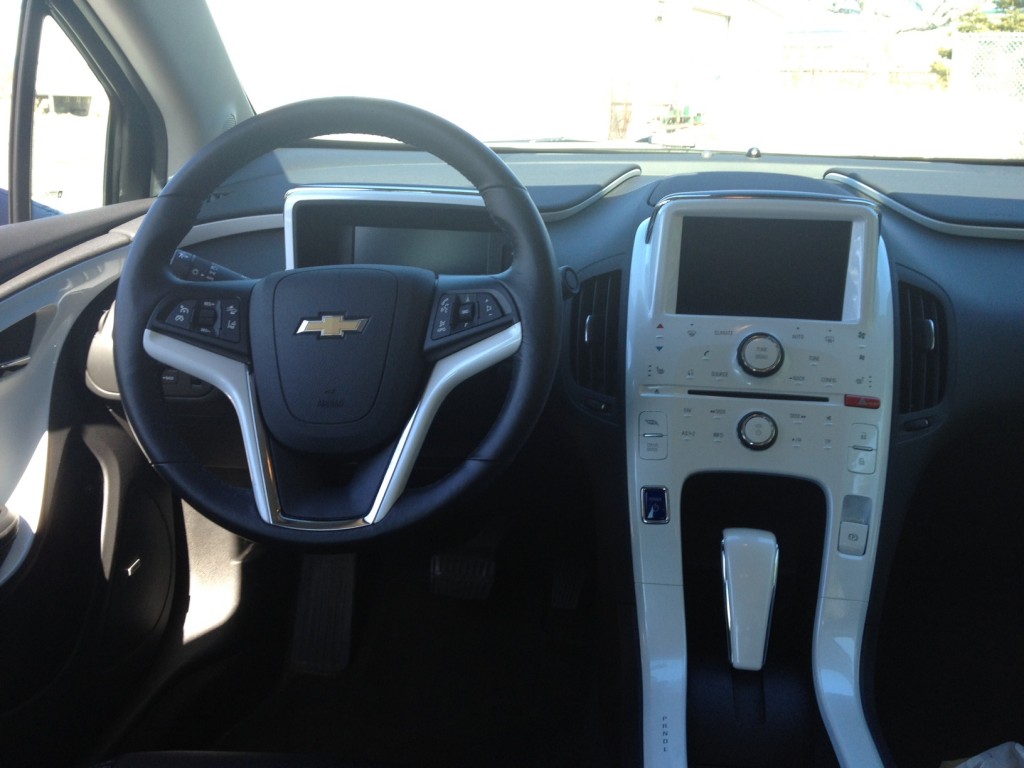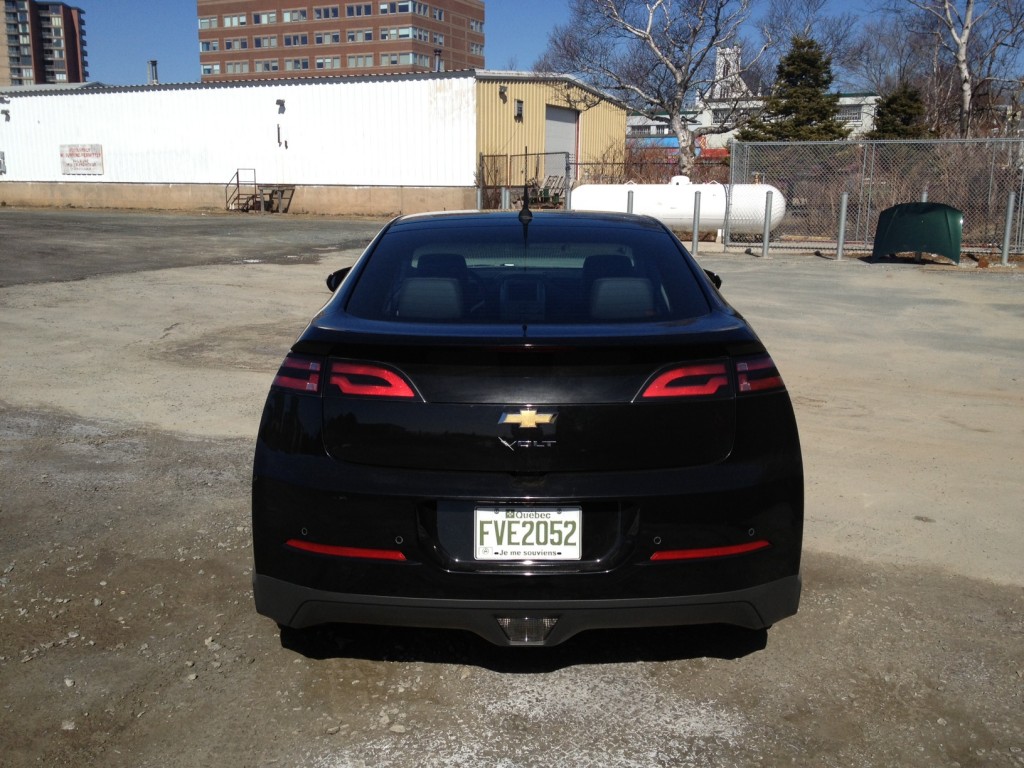By Kevin Harrison
If there’s one car in the past decade that has stirred up a lot of controversy both inside and outside of the automotive media, it’s the Chevrolet Volt.
For years GM rested on the sales of its SUV’s and re-badged product in order to sell volume and take in revenue. Obviously that’s not a very sustainable business plan and it bit GM in the behind as bankruptcy loomed. If it wasn’t for both American and Canadian governments bailing out the once automotive giant, GM certainly wouldn’t be around today. Part of the deal in the bail out was for GM to start committing to making more efficient vehicles.
GM’s answer to that? The Chevy Volt. The Volt was hailed as GM’s savior – the vehicle that would usher the brand into a new era of innovation, efficiency and technology. And because of that, it got both awards and negative press from the media and political pundits alike.
Well the Volt has been around for about three years now and all the hoopla surrounding the vehicle seems to have died down a bit. What a perfect time to check out to see how the Volt does in the real world.
Firstly, style-wise, the Volt is certainly a looker. The rear end design is almost concept car looking while the low aggressive front fascia give the impression that the Volt is a raw performance car. Look closely and the closed off grille would suggest otherwise though. From the side, the hatch is a bit more apparent and the optional 17 inch wheels are quite eye-catching. Overall the look is probably among the best of the ‘eco-car’ segment and GM did a fairly good job of keeping the car, for lack of better terminology, normal looking. Expect this body-style to stick around for a while and when a redesign does happen expect it to be an evolution of the same shape just like the Prius. The reason why is GM’s designers and engineers went through a lot to make sure the Volt is as aerodynamic as possible so as to create minimal drag. They even fitted a skirt beneath the front fascia to combat drag, but be aware, the Volt easily scrapes it against sloped driveways and speed bumps.
Inside the Volt feels like a cave. It’s dark and cozy. Personally I like this sort of enclosed feeling, but those with severe claustrophobia would likely prefer the bus. The windshield is sloped on a steep angle making for intrusive A-pillars. The layout is decent with a tall centre stack but everyone that I gave a lift to in the Volt absolutely hated the marsh mellow white colour. For the record, you can get it in dark grey and you’d be well advised to do so. The shifter, when in park, actually fits into the centre stack which gives it quite a clean look, however it does make it a bit more difficult to shift when you’re ready to set off. All the materials are quite high quality bordering on luxury levels and the seats are comfortable. The Volt is a four-seater due to the T-shaped battery, but it might as well just be a two seater since there is very little legroom back there -almost non-existent with the driver’s seat in my preferred position. The hatch allows for a large but shallow opening. Underneath a rather flimsy cardboard feeling cover is where the cord is found to charge it.
Speaking of charging, the Volt can be plugged into any regular household outlet (120 Volts) and the charge time is about 12 hours. However you can actually control the amount of juice going into the Volt. If you choose the higher setting, you can shave about two hours off that time. The Volt automatically defaults to the lower setting so as not to overload the circuit, so you’ll have to manually set it to the higher setting each time you charge if you want to shave off those few hours. But if you are really looking for a quick charge time, then you can opt for a 240 V charge unit, which GM sells at a rather costly $5,000. If you buy it, your charge time will be around four hours. The most I could get out of any single charge was about 45 kilometers. Keep in mind that we had a rather long and cold winter so I imagine you could do better than that in the summer months. I found that I could drive about a day on the electric motor alone before the gas generator kicked in to power the electric motor.
At this point, I might as well explain that set up. The Volt is not a traditional hybrid in the sense that the electric motor is the only motor that ever powers the wheels. In traditional hybrids, the gas engine works in tandem with the electric motor to power the wheels. However the Volt’s design is unique in that the gas generator only ever powers the electric motor. It never is the main method of propulsion to power the wheels. This relieves what the industry calls ‘range anxiety’ -that uneasy feeling that you’re going to run out of juice in the middle of nowhere with no charging station in sight. Instead, when the charge for the electric motor is depleted, the generator kicks in automatically to get you the rest of the way home. It adds an extra 400 kms or so worth of range. The switch over is quite seamless, in fact, the only real way you become aware that the generator has kicked in is in the digital gauge cluster. When you’re driving on a charge, a display with a battery icon is larger and more prominent. When the generator kicks in, the gas icon replaces the charge icon. That’s about it. Now, with that said, if you turn off the music and listen closely, you can hear the whirr of the gas engine working away.
Performance on the Volt is actually pretty decent. Electric motors are inherently good with torque and the Volt has 279 pound foot’s worth, so it will take off from 0-100 in about 7 seconds. But keep in mind, when you do this, it very much depletes the battery. It does ensure good pick up and passing power on the highway. Speaking of, the Volt glides on the highway and feels fairly solid and planted. In terms of cornering, the Volt surprises again. It’s fairly good, however it can under steer and get out of sorts quite quickly if you push it too hard. But considering that lithium-ion battery weighs about 400 pounds, and the Volt sits on rolling resistant tires, its handling abilities are quite good.
After spending a week with the Volt, the only things I found irritating was the length and frequency of the charge times and the lack of interior space. Otherwise, it’s quite a good car. For those who are city dwellers it makes perfect sense and it almost eliminates the need for a second car should you choose to have an electric car. That’s been GM’s argument with the Volt for a while. Typically if you had an electric car, you could only use it for short trips around town, but you still needed a second car for longer road trips. When you think about it, the Volt is a nice well rounded car that could indeed save a lot of the world’s problems with oil and the environment. It truly could be GM’s savior.
But here’s the thing. GM has only sold 1,595 Volts in Canada since it was introduced -hardly a savior by anyone’s standards. And here in Nova Scotia, the argument to own one becomes a bit tougher. We have only two charging stations in the city (one of which is at Nova Scotia Power for their use only). And speaking of Nova Scotia Power, they are still using coal to power electricity and 98% of Nova Scotians are Nova Scotia Power customers. So the argument of being better for the environment becomes nullified. You may be using less gas, however you’re using more coal. And on top of all that, Nova Scotians get absolutely no rebate for attempting to be green. If you live in Quebec or Ontario, you will find provincial government rebates on Volts in the 7-10 thousand dollar range, making the Volt’s steep $48,000 price tag a bit easier to swallow.
But truthfully that’s not really GM’s issue. It’s a Nova Scotia specific issue. We need to have a government and utility that is willing to invest in and encourage the sale of cars like these. Because the Volt really is that good, and with the right resources, it makes perfect sense. GM has the product already made, all we need to do in Nova Scotia is lay the foundation. If you live elsewhere in Canada without the restrictions here in Nova Scotia, well the Volt makes complete sense. In fact, it’s quite impressive that a car company that once relied on massive SUV’s for its profit, is able to make such a brilliant car that is kind to the environment and our pocket books. For that reason alone, the Volt will be recognized as an innovative part of automotive history regardless of how successful it will be.
Price As Tested: $48,030
Pros:
- Attractive shape
- High quality materials
- Innovative interior
- Unique engine set-up
- Decent performance
- No charge left? No problem
Cons:
- Tight interior room
- Charge time can be lengthy
- Nissan LEAF
- Toyota Prius Plug-in













